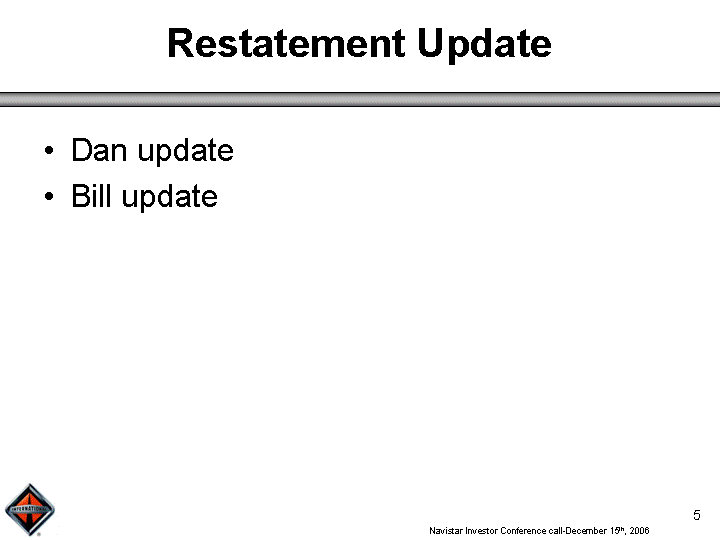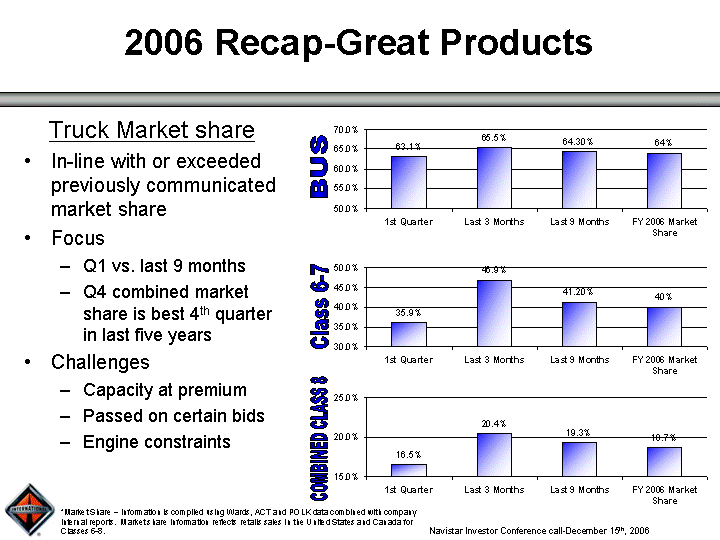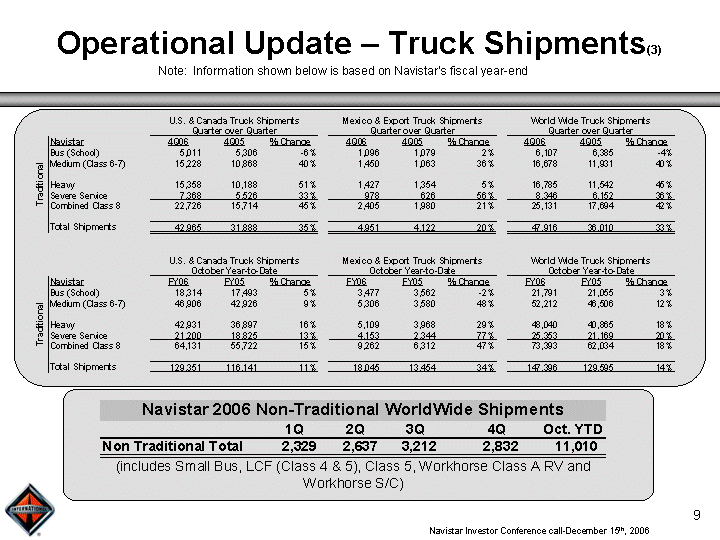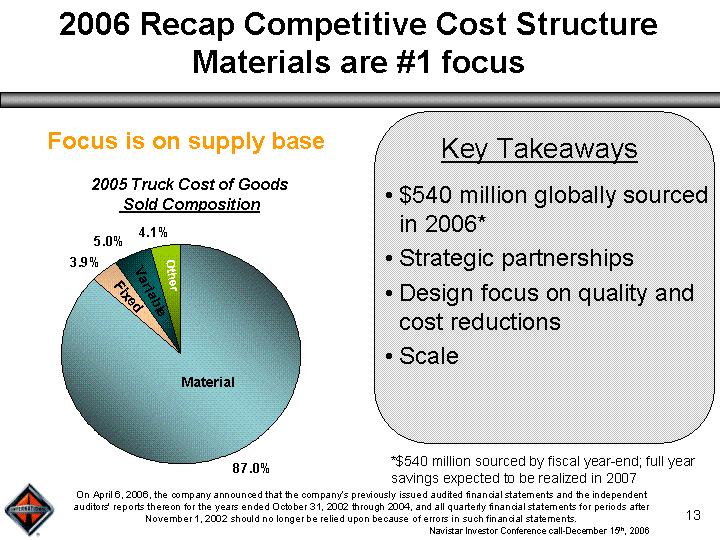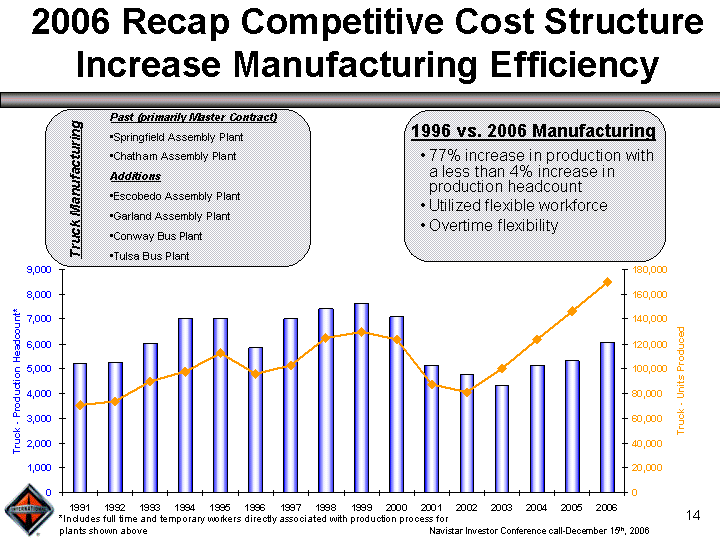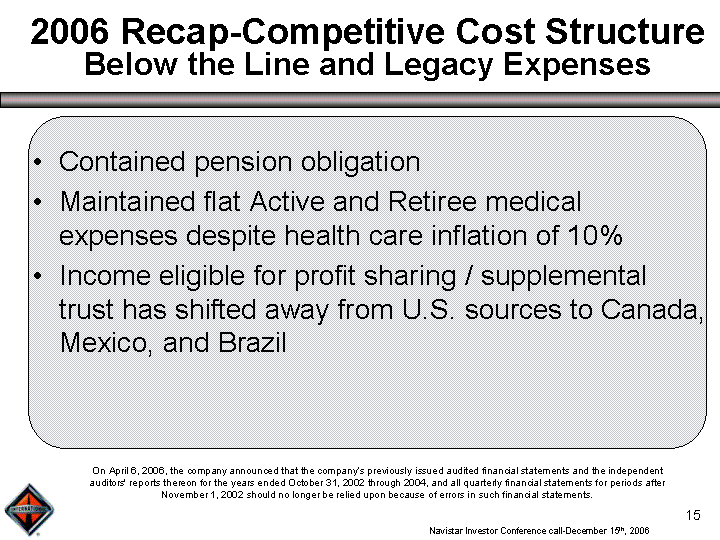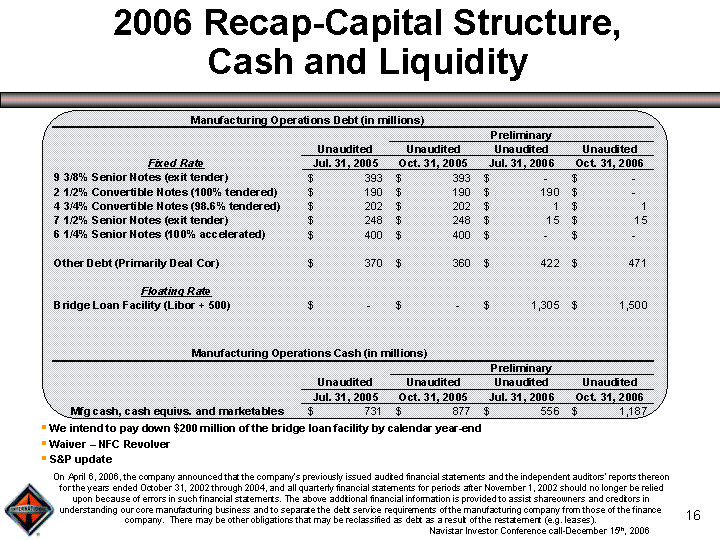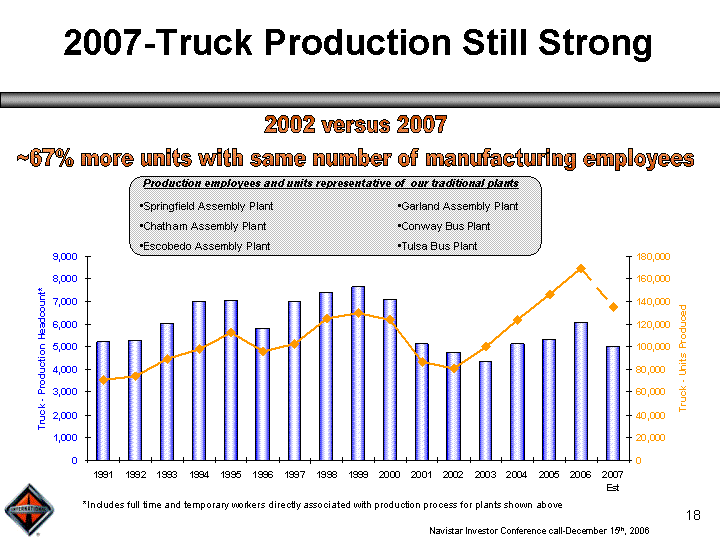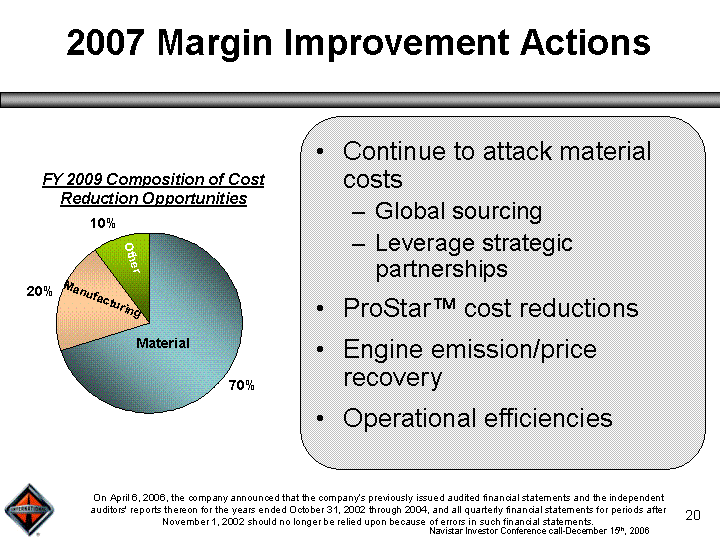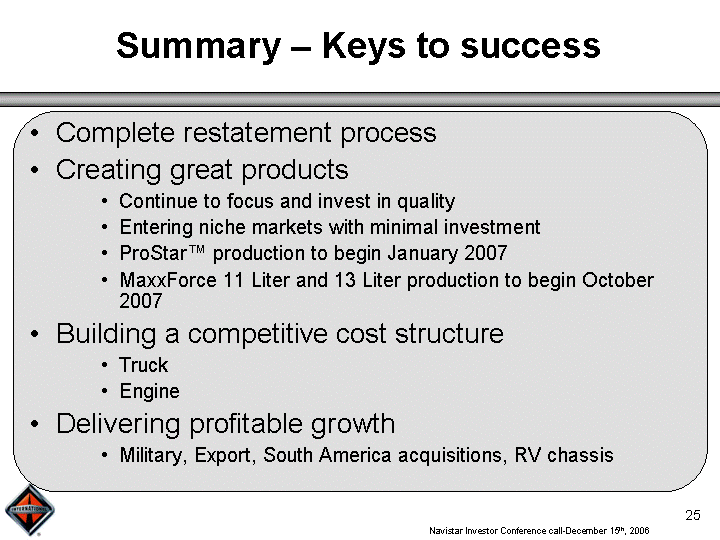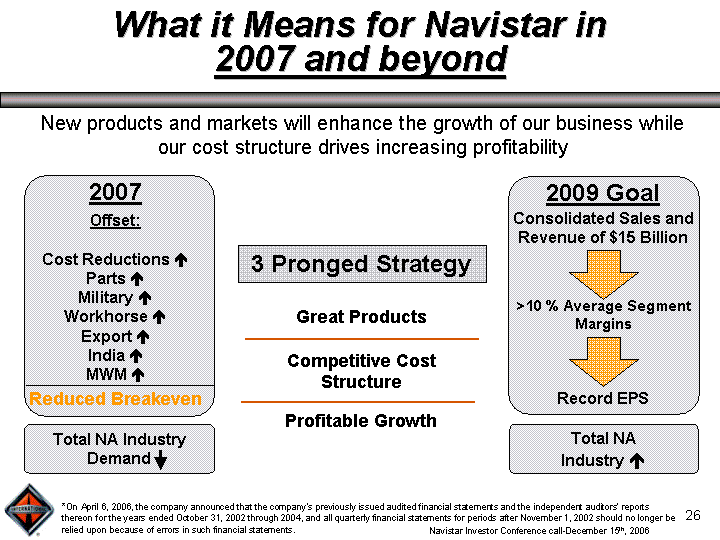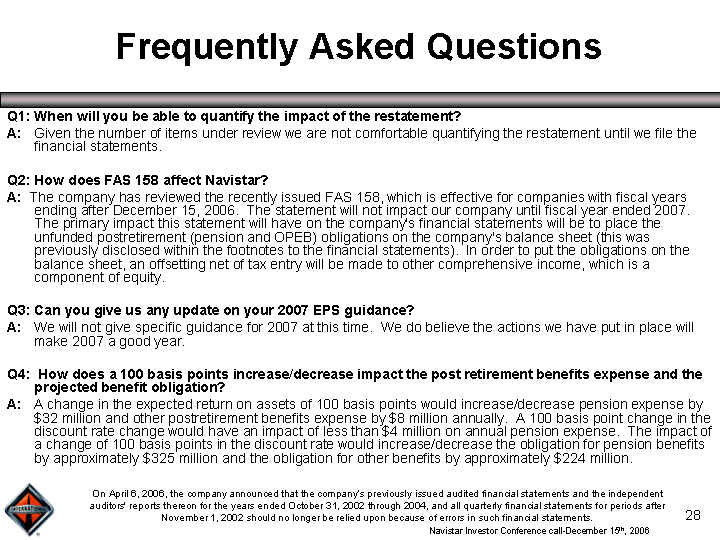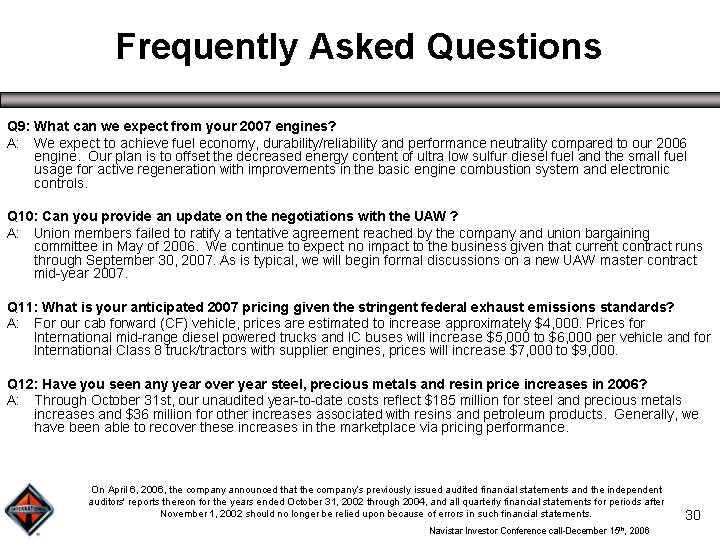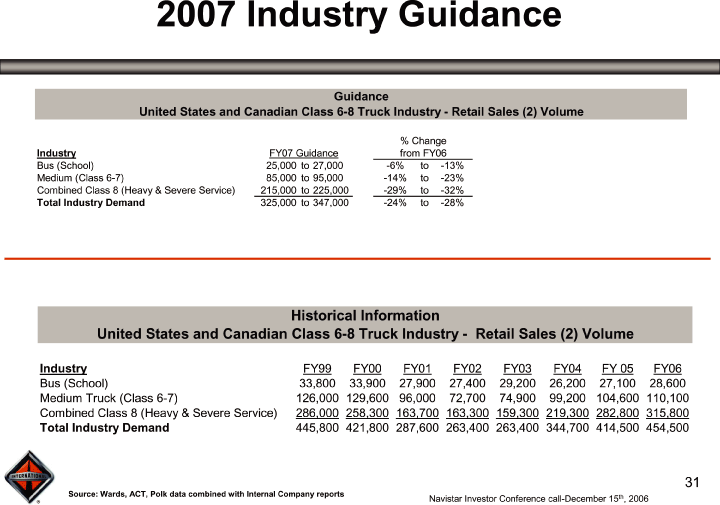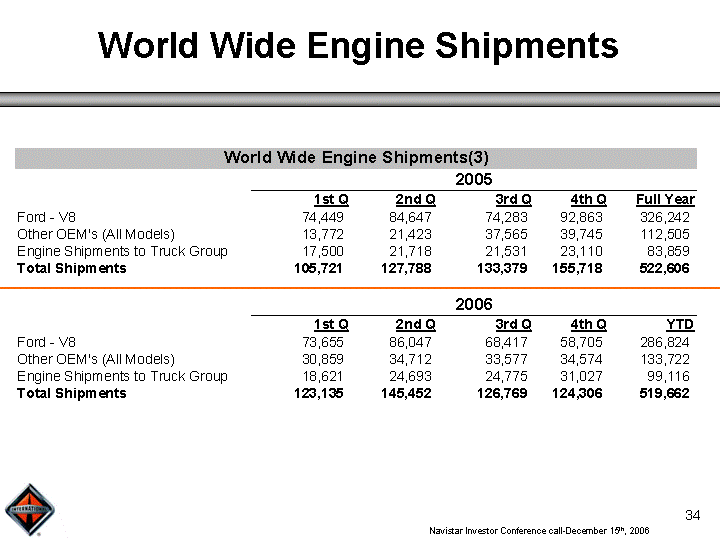Free signup for more
- Track your favorite companies
- Receive email alerts for new filings
- Personalized dashboard of news and more
- Access all data and search results
Filing tables
Filing exhibits
NAV similar filings
- 5 Jan 07 Navistar Receives $1.3 Billion Loan Commitment
- 4 Jan 07 Navistar Receives $1.3 Billion Loan Commitment
- 21 Dec 06 Notice of Delisting or Failure to Satisfy a Continued Listing Rule or Standard
- 15 Dec 06 Results of Operations and Financial Condition
- 4 Dec 06 Results of Operations and Financial Condition
- 30 Nov 06 Regulation FD Disclosure
- 20 Nov 06 Navistar’s Finance Subsidiary Receives Loan Waiver
Filing view
External links




